Arrival II: The Pie Garden
June 7, 2019 marks the first Edgewild strawberry and indeed the first Edgewild harvest of any kind. The total strawberry yield that season was about half a pound. My basis for that estimate is memory of quantity and size of berries compared to what half a pound of strawberries looks like when I harvest that many all at once this year. Summer of 2019 they all went straight in my mouth. I was not yet living here so I probably missed a few, though I did camp out for a week mid-June for my birthday which coincides with the height of the Albion strawberry season. What fine luck!
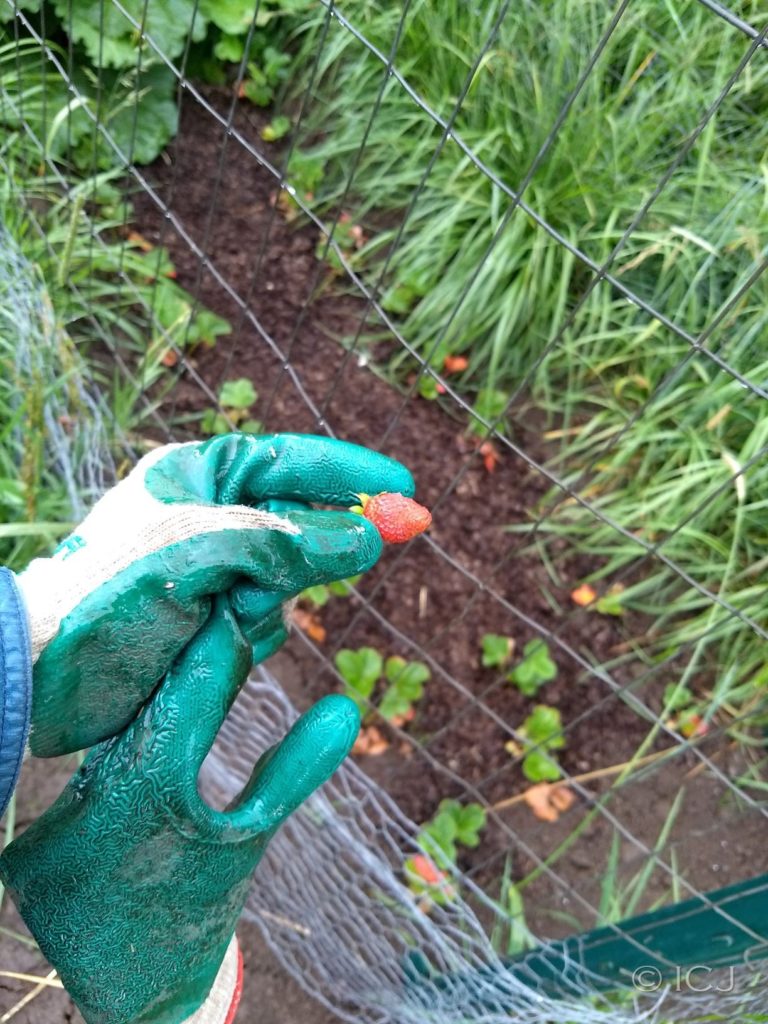
In the first 7 days of June 2021 I harvested a pound and a half of strawberries. I think they like it here.
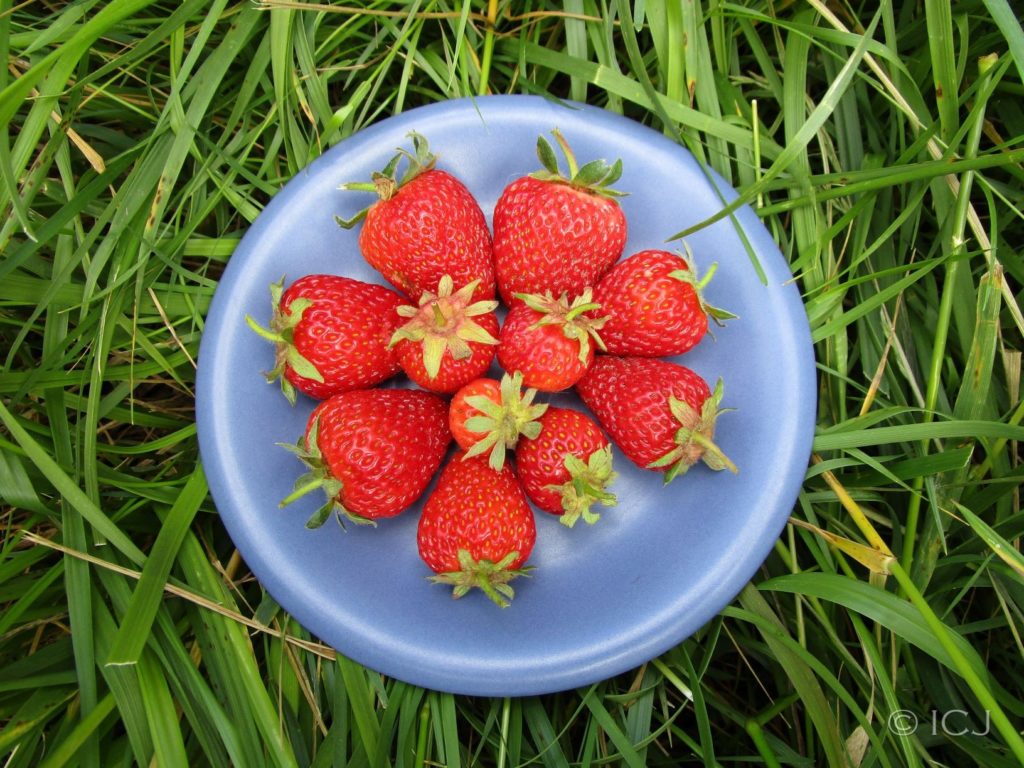
The vegetative ancestors of these strawberries came from Swanson’s nursery in north Seattle, spring of 2017. I bought 3 little pots each of Tristar and Albion. The Albion had two tiny crowns per pot. Judy allowed me to take over two of the 4’x4’ raised beds along her driveway for the strawberry effort. I added a generous layer of Cedar Grove compost. The Albion went nuts with runners and by fall of 2018 required division. I counted 54 total plants. The healthiest 24 first-year plants I potted up and kept alive through the winter in a wheelbarrow that I moved in and out of the garage depending on the weather. March of ’19 I moved them down here.
Judy story: July 2016 I moved in with Judy. I met her through mutual friends and had started doing yard work for her a month or so before. The entire double-size city lot was a garden, mostly ornamental but with 16 raised beds full of vegetables down one side of the long sloping driveway. Few yards in Seattle have as much character as Judy’s did, but then few humans of my acquaintance have as much character as Judy.
But about the strawberries . . . Several times that fall and several more over the winter when we were ordering seeds and cleaning up for next year, Judy asked me if there was anything we weren’t growing that I wanted. Every time, I said “Strawberries!” and every time, Judy said “No.” I love Judy dearly. This is just the way she is.
Finally in the spring I convinced her that there were more vegetables growing than she would take the time to harvest for her own consumption or food bank donations, and she gave in. I did not get to eat the first half a dozen strawberries because I was waiting until they were perfectly ripe and when I got home from work on a day I expected one ready, they were gone. Judy eventually confessed. “So YOU’RE the critter!” Ha. This was the source of some good-natured razzing as long as the strawberries were there. Judy was 76 years old at the time.
When life gives you perk test holes, plant something!
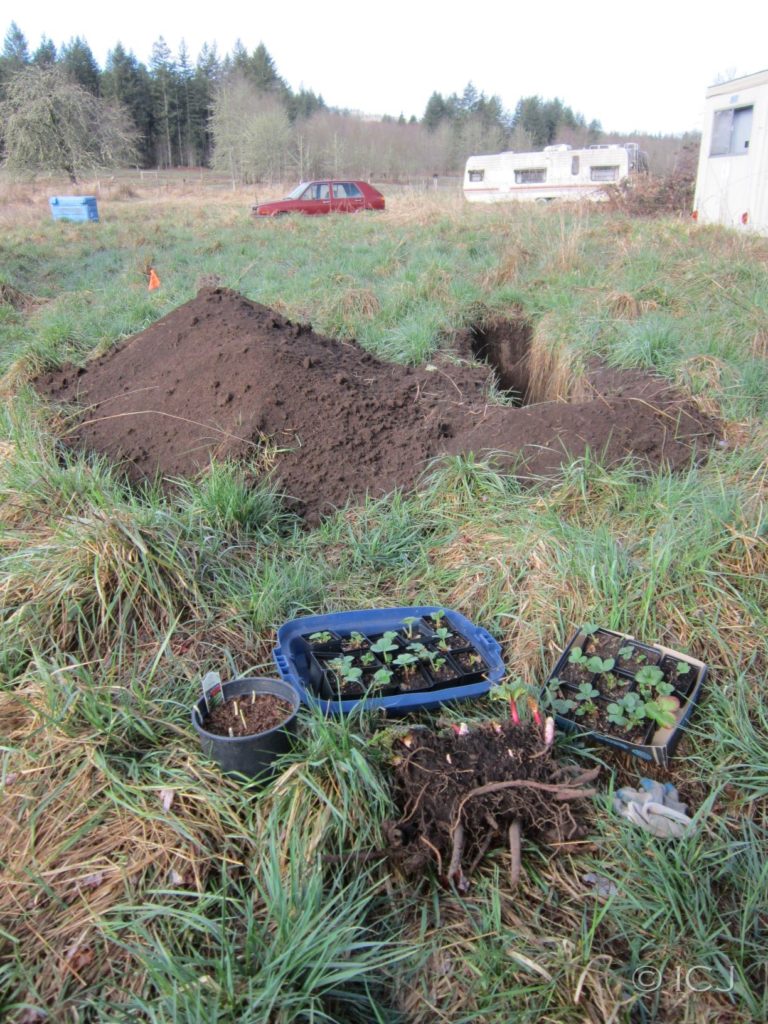
Arrival.
For my 25th birthday I made myself a mix CD called “Arrival: Quarter Past Never” loaded with themes of wanderlust and shapeshifting. I made a dozen copies and gave them to friends for Christmas later that year. Somewhere around 30 I started feeling ready to trade in my wheels for roots. My personal definition of ‘arrival’ became having my own asparagus, rhubarb, and strawberries in the ground somewhere. Strawberries like to move every 5 years. They bear the most heavily years 3 & 4. Asparagus and rhubarb take 5 years to really get going and like to stay put for 15. It’s a sign of commitment putting those in, and of hope.
It took another decade for things to work out. Once I had the title to a good patch of soil of course I had to start gardening right away, and of course the first ceremonial garden had to be asparagus, rhubarb, and strawberries. It’s a good thing they get along. Asparagus likes to be planted early, just as the soil is thawing out, and garden centers stock it accordingly. I went to Swanson’s Nursery and picked out 7 bare-root plants of Jersey Knight, then packed them in soil and kept them in Judy’s garage until it was time.
The ancient and venerable rhubarb clump behind Judy’s garage, probably 15-20 years old, took some serious digging up. It was so large I had to slice it into mini-clumps by jumping on a shovel before I could lift it out of the ground. The most robust of the root clusters came straight here. The medium-sized ones I gave to friends and put one back in the ground for the future owner of Judy’s house. Several small ones I kept in pots for a year. Four survived and went into the corners of my big garden last spring.
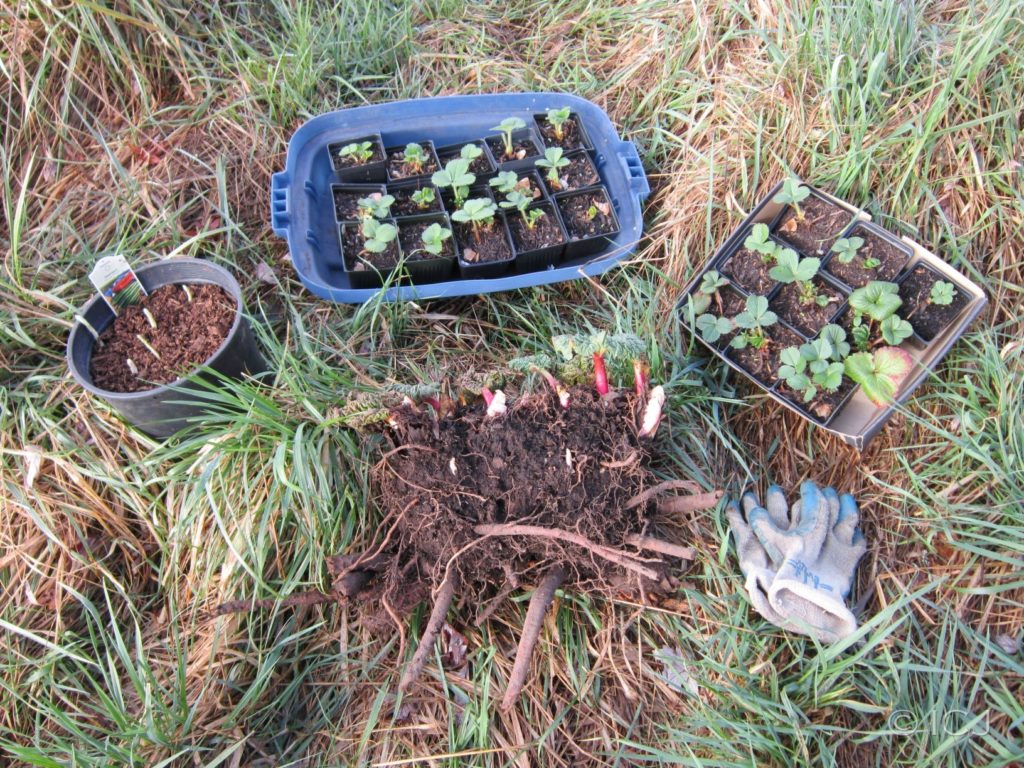
It took four hours of actual digging time spread out over most of a day to fill in the 6’ deep perk test hole before I could start planting. Later that spring my neighbors asked if they could graze their sheep and horses over here for a few weeks to rest their pasture. They filled in the other 5 holes with their tractor in half an hour.
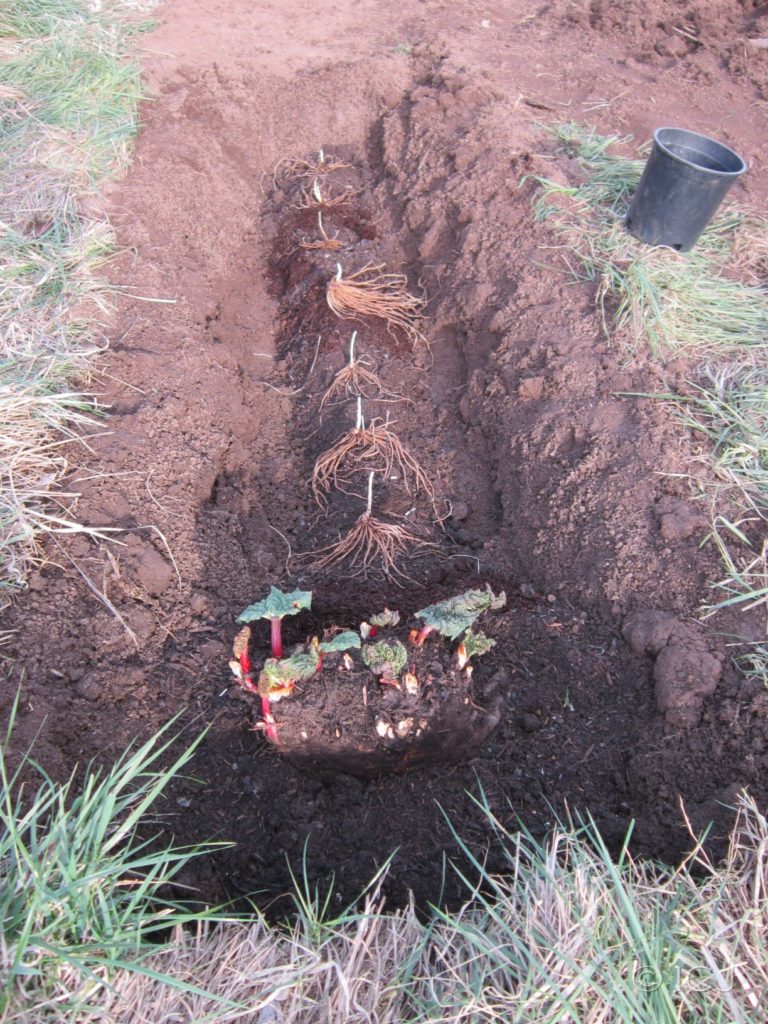
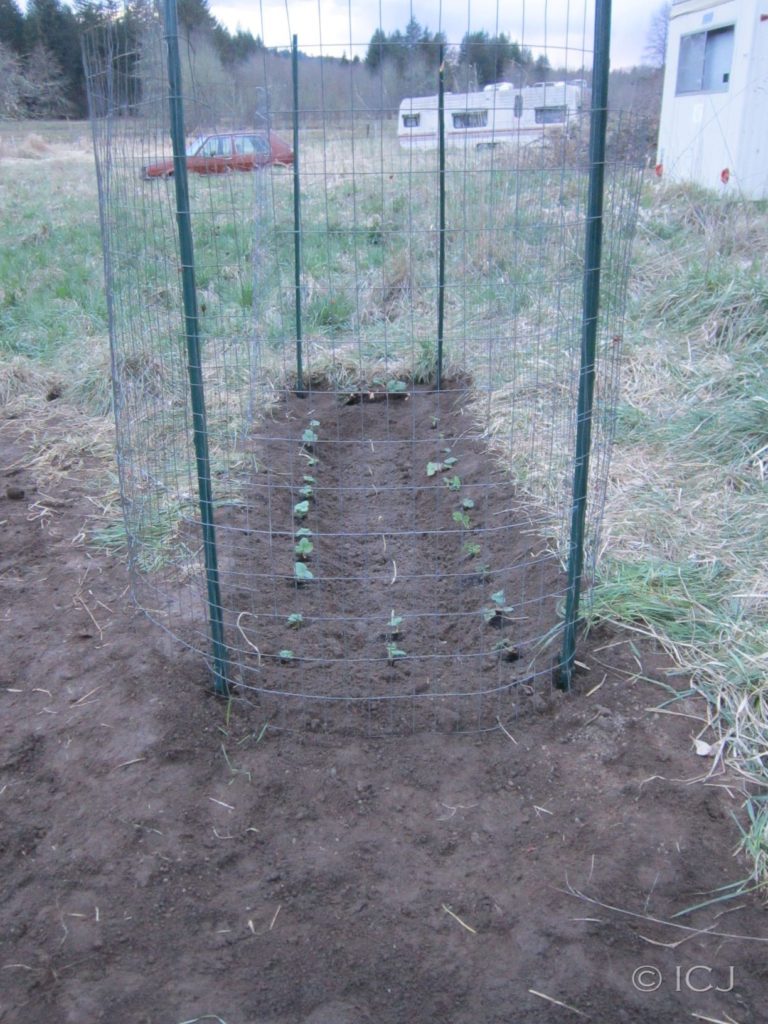
This year the rhubarb started growing like it meant it in early May. This fistful is from the 6th.
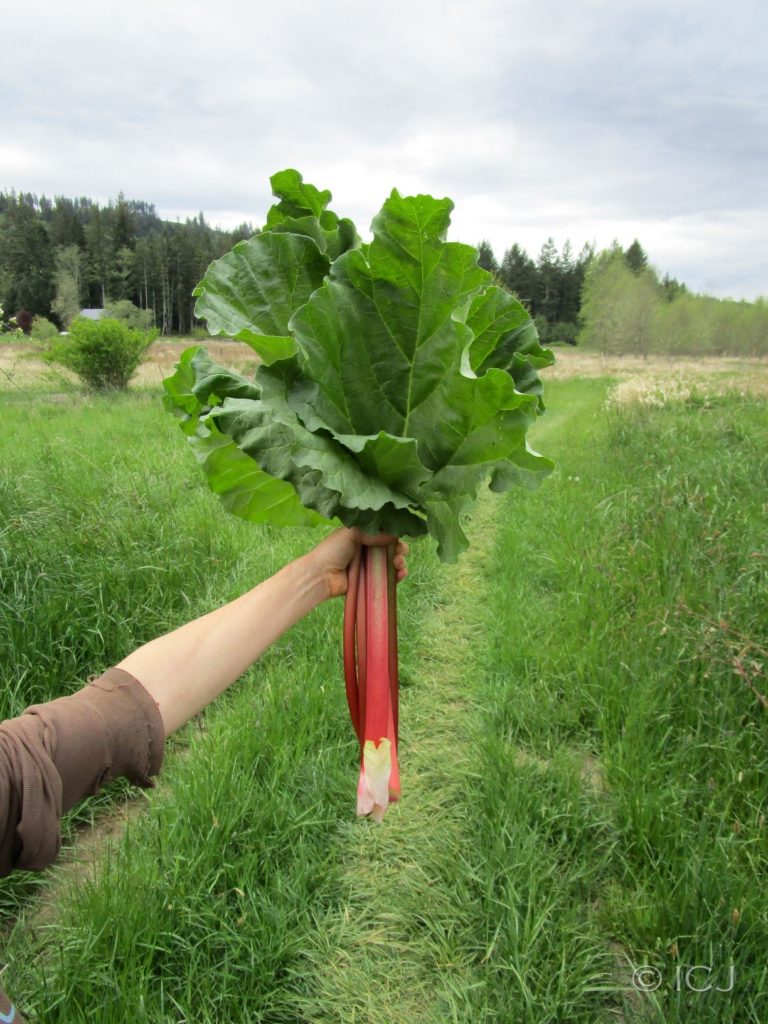
Today (June 11 when I started writing this) I harvested 14 oz of rhubarb stalk from the Pie Garden. (One leaf measured 27” wide and 27” from top of stalk to tip!) I froze the whole batch. I should be able to save up enough strawberries by the end of the month to make some strawberry rhubarb jam. I’m not dealing in pie quantities of strawberries just yet.

Last fall, between the apples in my root cellar, the rhubarb, blackberries, and Aldrich Farm blueberries in my freezer, and the baking supplies I always keep around, I could have subsisted for a month entirely on pie.
Really the whole place is a pie farm. Especially if you expand your definition of pie to include quiche and deep dish pizza. They’re round with filling and a crust. Even just talking classic pie, the orchard and berry game is a lot more promising than the vegetable one. Veggies have been more work with heavier losses so far and would require higher input costs, both money and materials, to adequately defend.
Actually I nearly always make crisp instead of pie. Taking the time to master pastry crust is on the long-term self-improvement list for sure but the oatmeal crumble topping is so easy to prepare and turns out just right every time. Anyhow, someday I hope to be growing all of the ingredients for the expanded-definition pie category except for the butter and flour. It makes way more sense indefinitely to import grains and for the most part cooking fats as well. Growing, harvesting, and processing flour, butter, and oils does not really work on this scale, much as I would like on principle to learn how.
When I have grown the entire filling for an asparagus mushroom quiche, I will really have arrived.
It’ll be a while on the asparagus. 3rd time’s the charm, I hope. The 2019 asparagus were quite healthy and even put up one or two spindly green shoots per plant several inches high.
When I came down again a couple weeks later, they were gone. My neighbor said it was the mice. All that work fencing, in vain. 5’ tall dear/elk layer and a 2’ high bunny-proof chicken wire layer. There’s no fencing out the field mice, aka voles. They’re the size of gerbils though rounder than a hamster and they can tunnel right in. Fortunately they can’t climb. Things are safe from voles if you can keep them more than 6” off the ground.
2020 I was too busy getting my home site ready. No time to garden until asparagus season had gone by.
The 2021 asparagus I mail ordered. Never doing that again. It arrived a ball of rotten mush due partly to overzealous rubberbanding and partly to being sealed in a plastic bag at goodness knows what temperature extremes while being in the clutches of FedEx for a week. Also, five plants (what was left of them) was about the total mass of one of the Swanson’s asparagus plants in 2019.
I had meticulously cleared a 4’x8’ bed for it with good help detail weeding from my friends Wendy and Jennifer. After wincing in sticker shock (lumber prices were already somewhat ridiculous in March) I bought and had cut the cedar 2×6’s for an 18” high (well really 16.5”) raised bed.
I had planned to build 6 raised beds this spring, as that is the only way that greens, brassicas, and root vegetables will survive here. Nevermind. The asparagus is worth it on principle as well as for convenience and quality of fresh homegrown asparagus and may pay for itself in the 15 years that both asparagus plant and cedar boards should last. Salad greens I can grow in planter bowls on my porch. Brassicas, potatoes, and carrots—farmer’s market it shall be!
I planted 3 lbs of potatoes last year and got 2. It should’ve been upwards of 15. Damn the voles!
Half the cedar got repurposed for the foundation for the greenhouse. I’m lucky I had it here already when that project was underway. Hoping prices will relax late fall so I can build the asparagus bed and be ready for spring of ’22.
Don’t take on farming unless you have the stomach for disappointment and for waiting. You are in for lots of both. At this rate I will be nearly 50 before I have a plate full of homegrown asparagus.
As a wise man once sang in a monster ballad, “Two out of three ain’t bad.” Two out of three is in fact a grand success if you are starting a diversified farm.
If the two out of three remaining occupants of the Pie Garden continue thriving and increasing productivity at their current rate, next year for my birthday there will be strawberry rhubarb pie.
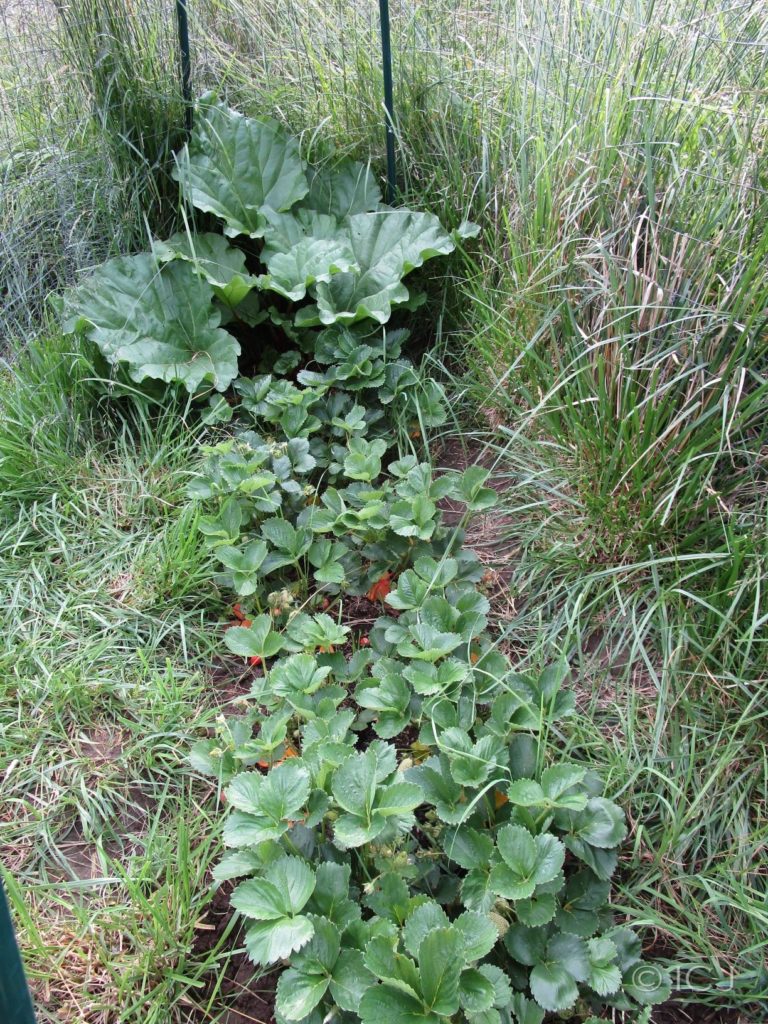
Homegrown Food Day – June 1
Strawberries and rhubarb feature prominently.
Breakfast: Steamed Rhubarb and Apple, Coffee
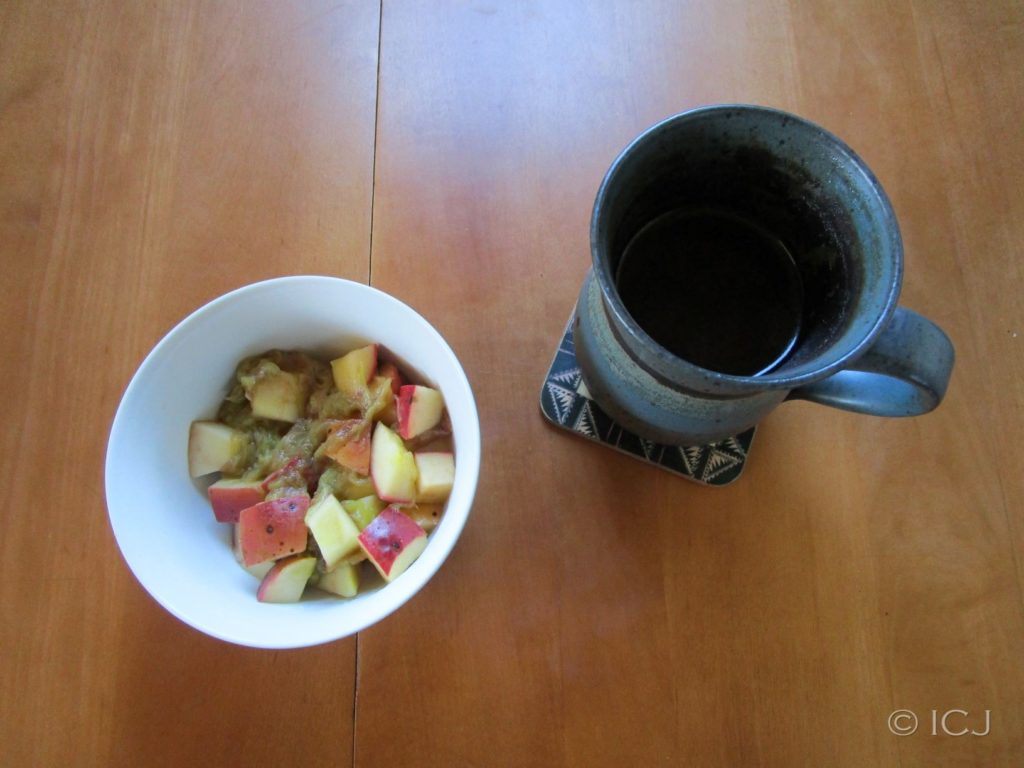
Breakfast included the last fresh apple from last year. Nearly six months in a bucket in the root cellar, then two months in a bag in my fridge. That’s a pretty good run.
Morning Snack: Apple Rings and Rhubarb Apple Horsetail Tea
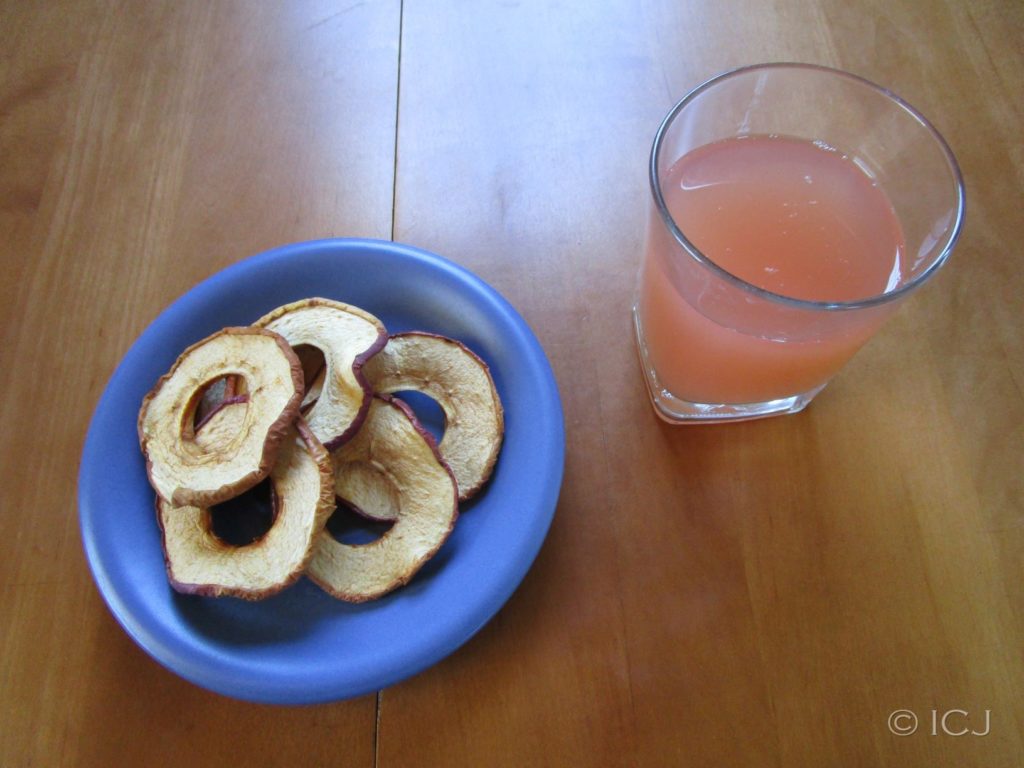
The apple rings are nearly 3 months old now, I think. Stored sealed in glass at room temperature they are only slightly chewier than when I first made them. They are better than any store-bought ones I’ve had. I will make more next year.
The tea is the juice from the sauce pan under the steamer basket left from breakfast mixed with refrigerated horsetail tea. It’s really refreshing and great for hydration with the minerals from the horsetail.
Lunch: Arugula and Lettuce Salad with Strawberries
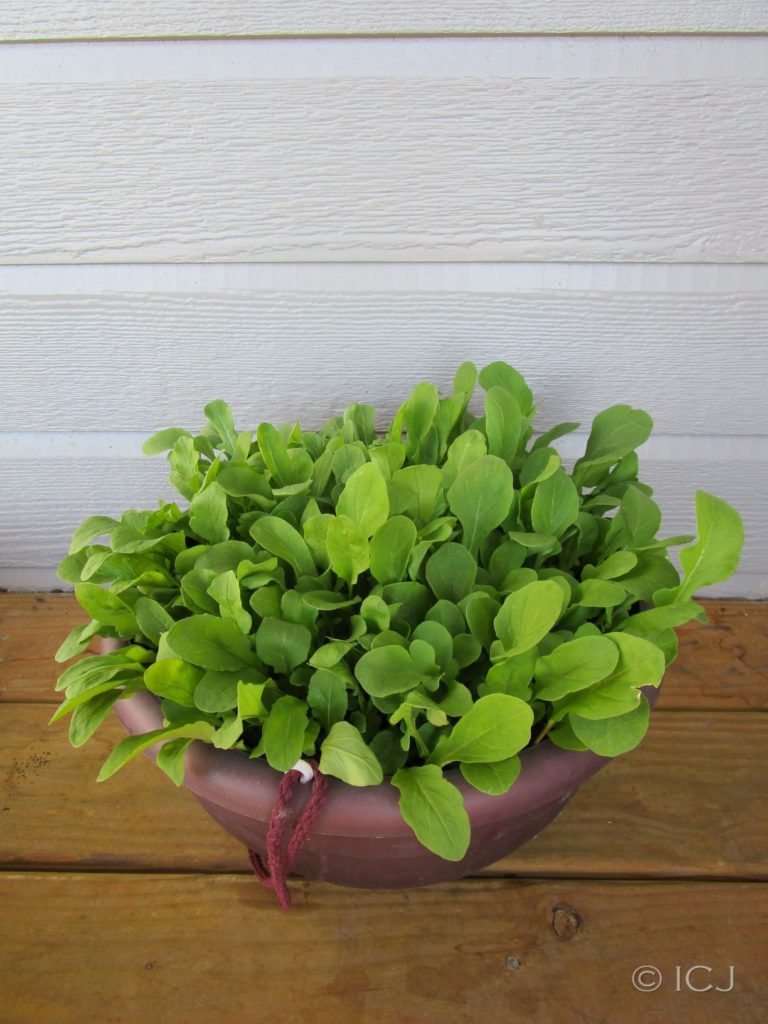
Arugula at last! Never before have I struggled to grow arugula. It thrived even in the crummy hardpack soil of the Chicago community garden that I started in what had recently been a sorry excuse for a lawn. I suspect it doesn’t tolerate the soil acidity here. What little did manage to make it past germination got eradicated by critters after doing nothing at all for several weeks. Happy arugula goes from seed to harvestworthy leaves in 2-3 weeks. It germinates in just 4 days. I tried a couple batches of it in containers similar to this one in “Edna’s Best” by E. B. Stone, the high-quality potting soil that I have been using for years for my houseplants and some container vegetables. It fared poorly though not as bad as in the ground. I was not sure what I was doing wrong.
Then my friend Lucas of Root Cellar Farm introduced me to MJR. I’ve been doing experiments. Jury’s out on several but with the arugula it’s no contest. I started two containers on the same day. The MJR group was so much healthier than the Edna’s group that a couple weeks after germination I tossed the latter in the compost. Sadly, this batch bolted a few days later because of the unseasonably early heat. Should’ve been able to harvest off it for several weeks. I moved it off my porch during a rain and left it there a little too long. Arugula will tolerate a light frost once it has its first true leaves and survive temps down to the mid-20’s if it is in the ground. Like lettuce, too hot and/or dry for even a day and it’s over.
Just a little olive oil for dressing. So much good flavor and juiciness that I could’ve enjoyed the salad without dressing. Really fresh vegetables grown in good conditions don’t need much help with taste. In fact often it is a shame to mask their natural yumminess with additives. Today the olive oil was for the calories.
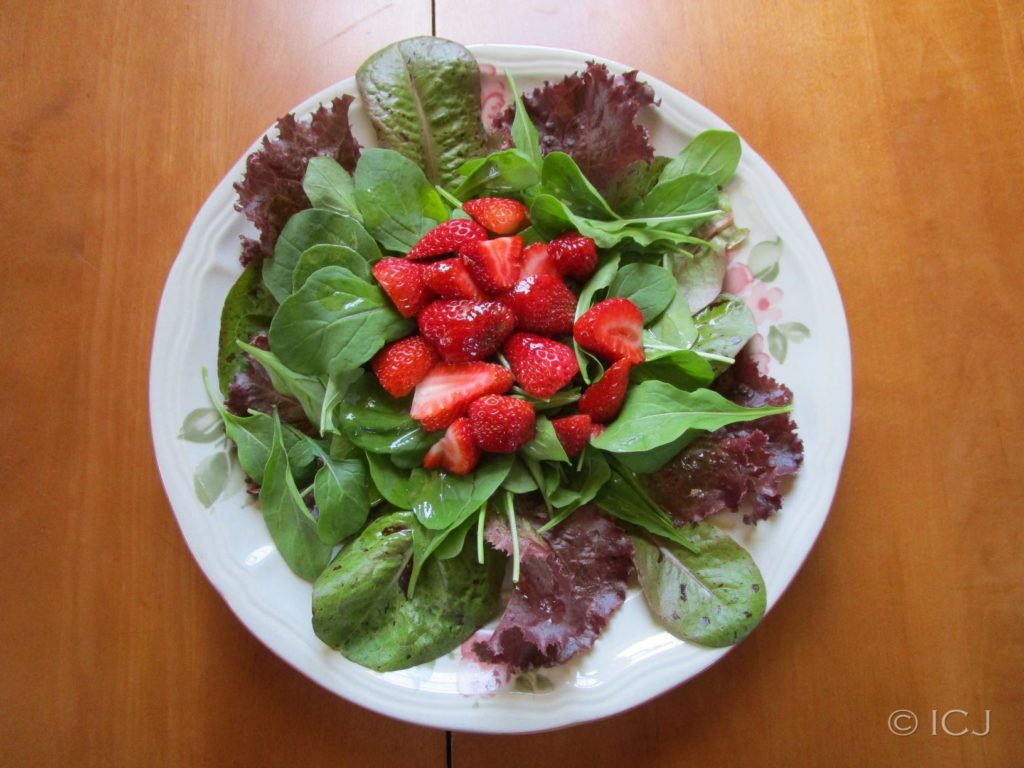
Afternoon Snack: Rhubarb Apple Leather, Doublemint Tea
Apple leather from just over a month ago is pretty good. Slightly stale. Stored sealed in glass but not space efficient. Way more air than food in there.
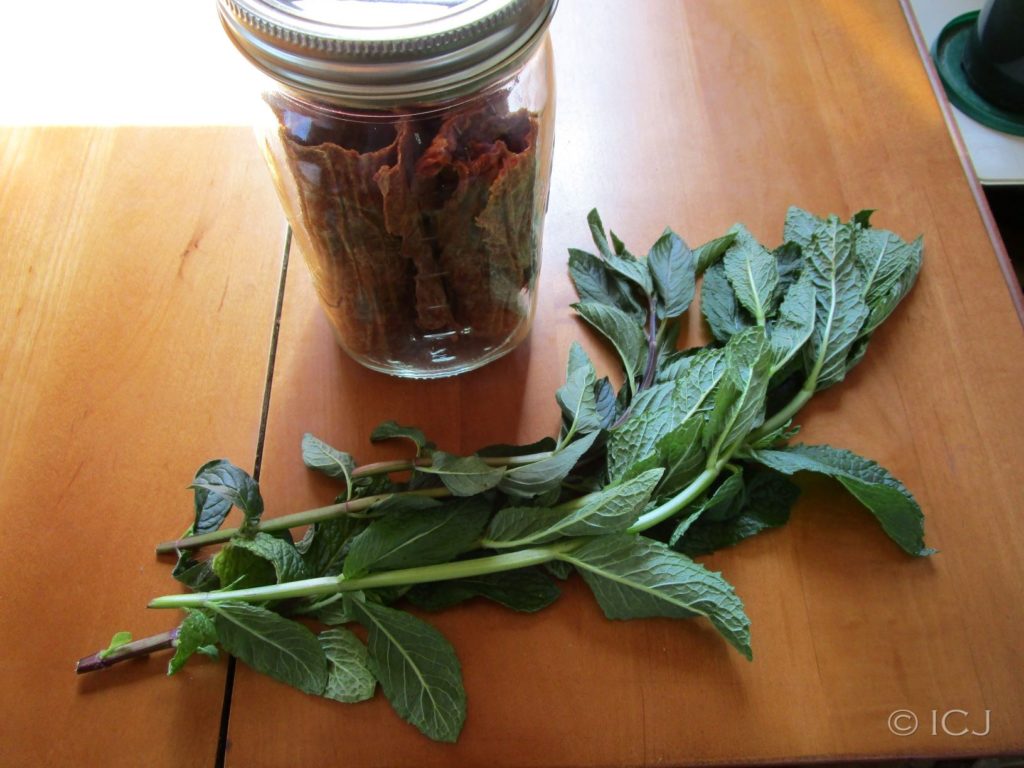
Dinner: Braised Field Greens with Shallots
Slim pickings for dinner food this evening. Would’ve been awfully nice to have some black beans. I planted twice as many black beans this year, several weeks earlier and in better soil thanks to last year’s amendments and a sprinkle of wood ash this spring to help neutralize the pH. I’m hoping this will result in 4x or better yield. Their little viny stems have started to stretch up between the first true leaves. Trellising required before the first of July.
The shallots continue to hold up beautifully. I have four left after tonight which I will save for Homegrown days to get me to October when they should be ready for harvest. I planted about as many shallots this year but in improved soil and on the other side of the lot from the Giant Slug Zone near the drainage ditch so they are doing better. Sizing up steadily, starting to evolve out of ‘any tiny allium’ mode, becoming recognizable as shallots with the signature red papery sheath around the top of what will be the bulb. Thus far 90-95% remain unscathed and none are gone.
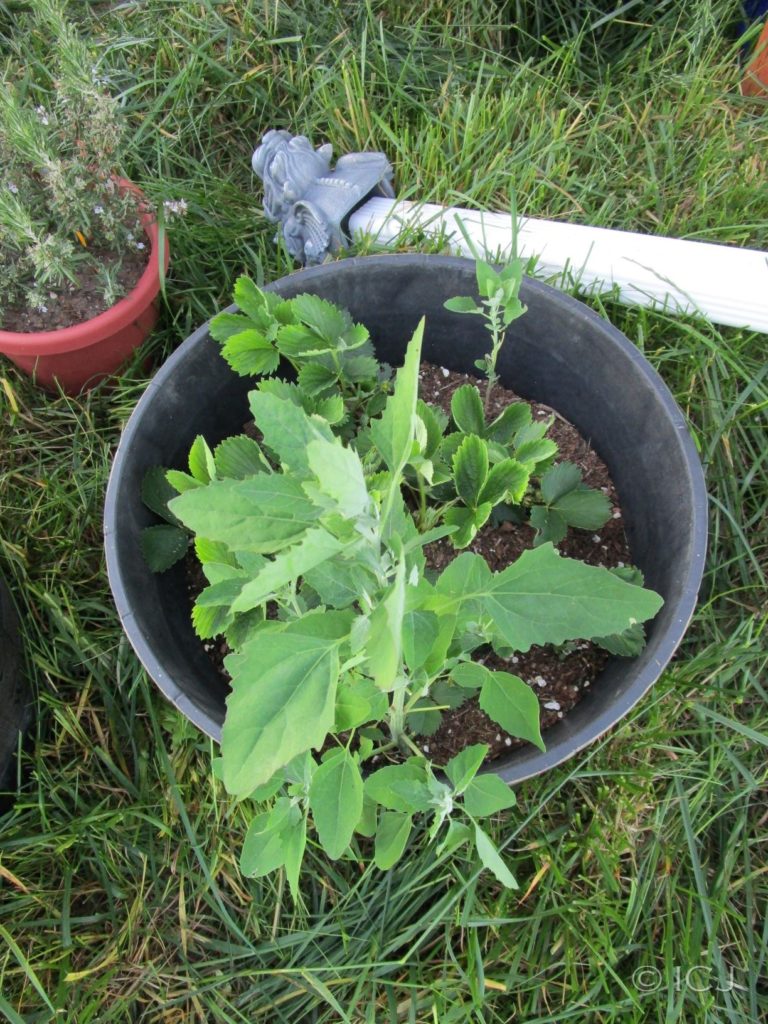
I foraged dandelion, sheep sorrel, lamb’s quarters, and clover and rinsed them, then added to the shallot sauteing in olive oil. I had already soaked the dandelion greens in salt water which helps them be more tender and less bitter. It amounted to a decent helping even with all the shrinking that cooked greens do.
At least it would have been a decent helping of greens as a side with some other main dish involving protein and carbs. The upside of having a 90 degree day on June 1 is that guzzling water and moving slow left me with less of an appetite than usual. It was fairly tasty. The flavors blended well. If I had it do over I’d cook the dandelion and clover a little longer and throw the sorrel and lamb’s quarters in at the very end.
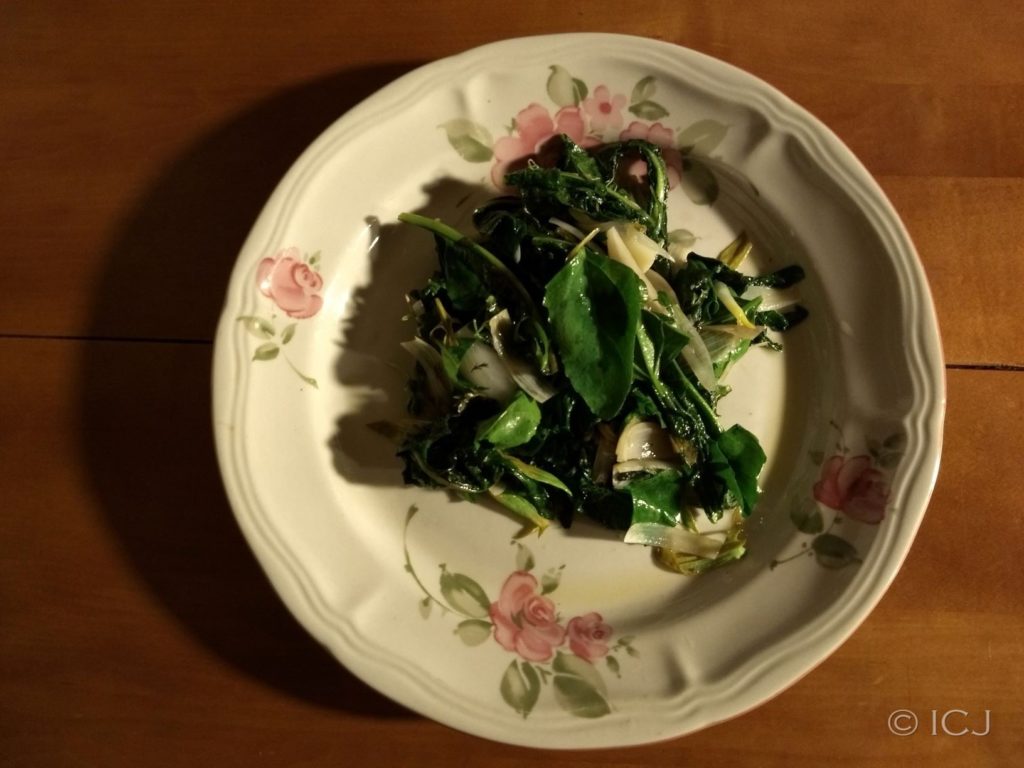

Wow , Ingrid! You’ve gone from gardener to farmer. I admire you for journaling all the ups and downs of the journey. 🌸